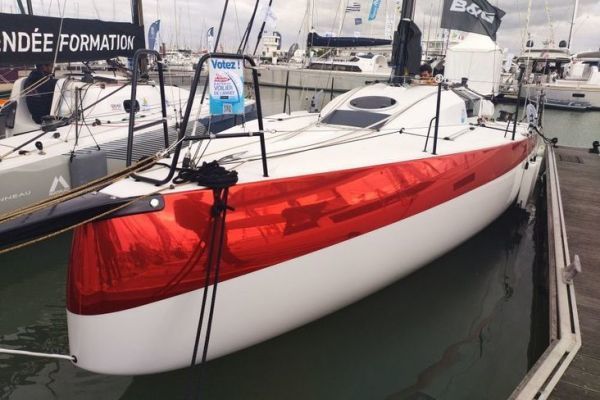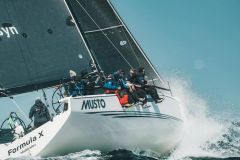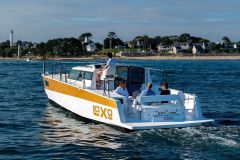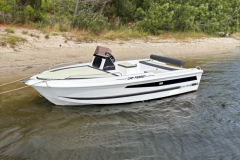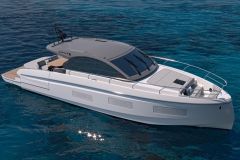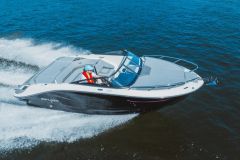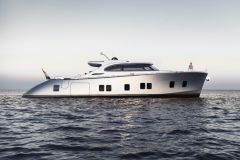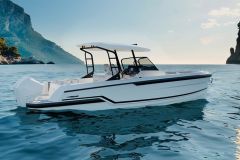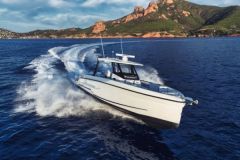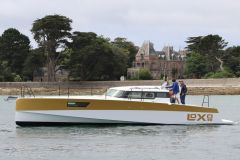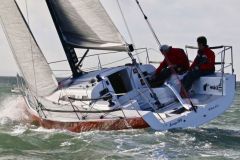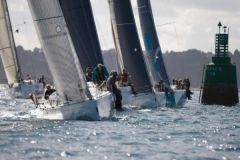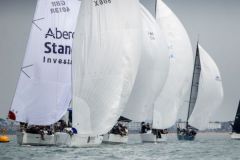A long-awaited visit
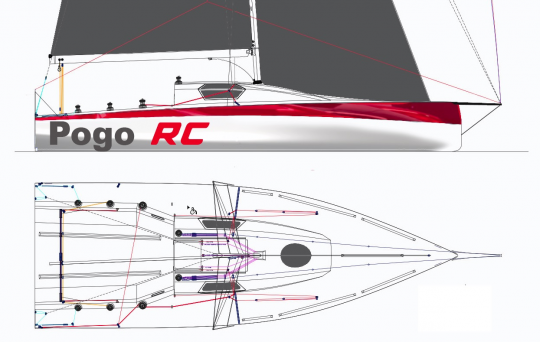
On the Grand Pavois pontoon, the Pogo RC does not go unnoticed in its red covering. Its instantly recognizable silhouette breaks with the wiser lines of the shipyard's cruisers.
The wide, spatula-shaped bow, inverted sheer and low freeboard at the stern bear witness to a quest for hydrodynamic efficiency, while the high bowsprit betrays the filiation with modern semi-scow hulls.
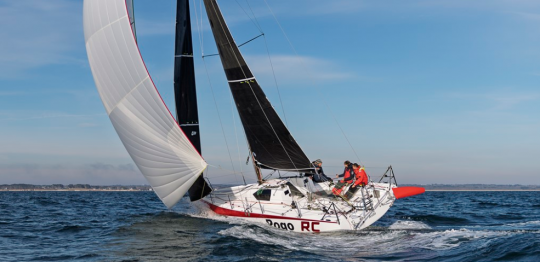
Beneath its deliberate aesthetics, the Pogo RC reveals a highly rigorous construction: infused hull, carbon structure, assembly optimized to the gram. The shipyard, renowned for its Mini 6.50s and Class40s, is transposing its know-how to a new program: IRC regattas, both short-handed and fully-crewed.
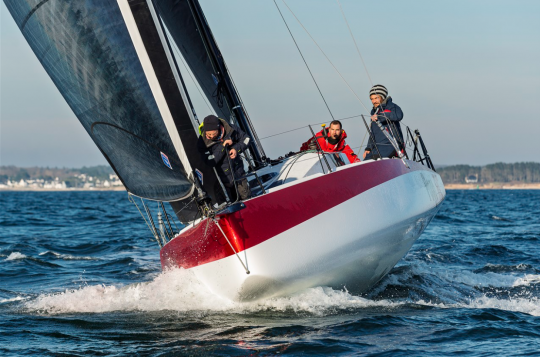
A carène signed Manuard âeuros Nivelt
For this model, Christian Bouroullec and his team chose to entrust the design to Sam Manuard and Bernard Nivelt, two architects whose creations dominate the starting lines in IRC and ocean racing.
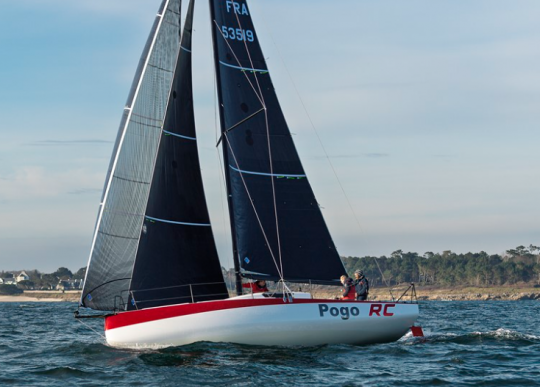
The result is a planing hull, powerful on downwind points of sail, but capable of steady upwind performance thanks to a balanced sail plan and careful attention to weight centering.
With 3 tonnes on the scales, a carbon mast and two retractable rudders, the RC boasts a power-to-weight ratio typical of boats designed for long offshore regattas such as the Transquadra or the Cap Martinique.
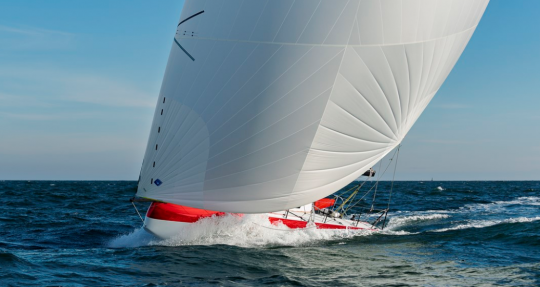
A bridge designed for performance
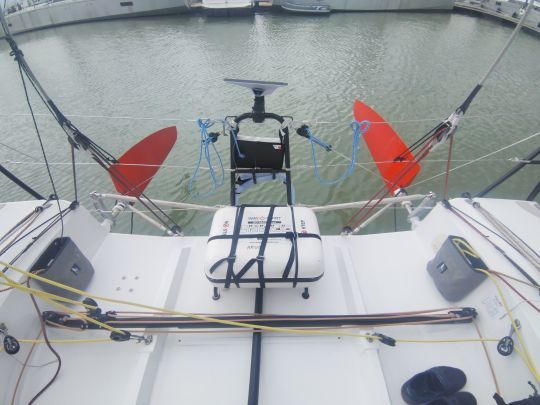
On board, the cockpit immediately sets the tone. Wide and uncluttered, it houses all the fittings necessary for performance: full-width mainsheet helm, numerous winches, textile blockers, tilting footbraces, and vast bowsprit lockers ready to swallow up manoeuvres.
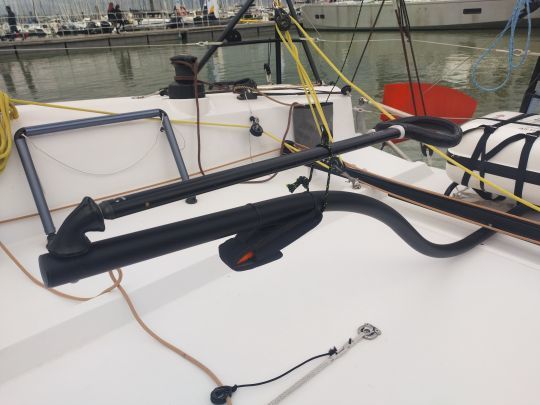
The whole boat exudes regatta spirit and precision. The deck layout, worked out in collaboration with racers, favors fluid circulation and rapid trimming. The side and aft ballast tanks are evidence of the boat's determination to perform as well with a full crew as it does double-handed.
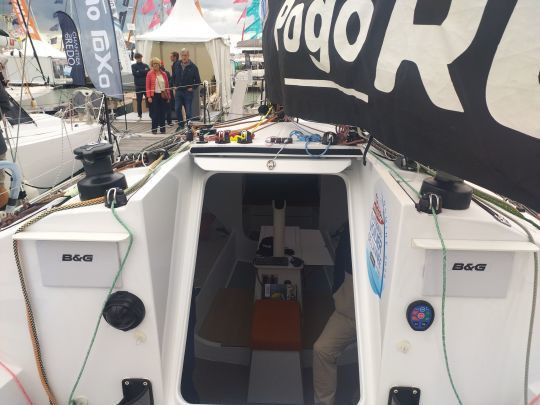
Technical but coherent interior volumes
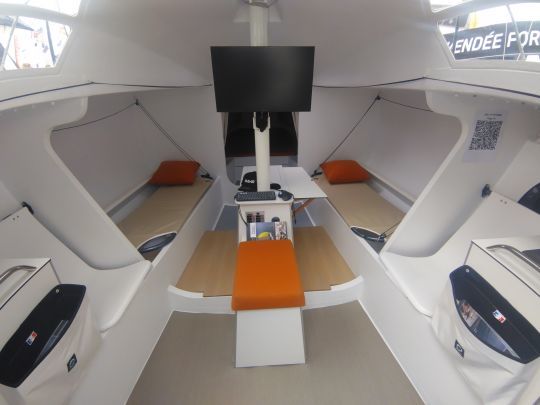
Inside, the ambience is faithful to the shipyard's philosophy: uncluttered yet functional. The symmetrical central saloon is home to two facing watch seats, with a navigation station hinged on the sponge.
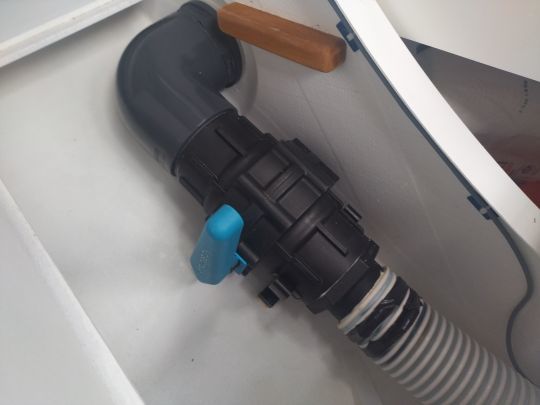
The ballasts are discreetly integrated into the floor and the minimalist furnishings, lightening the boat without neglecting its solidity.
At the bow, a small space houses a marine toilet and washbasin; at the stern, two single quarter-berths. Headroom is around 1.90 meters at the companionway.
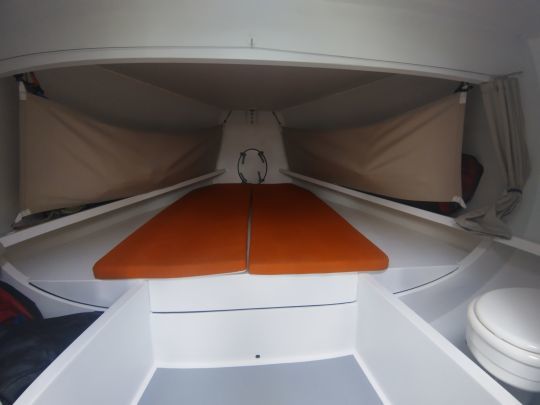
The kitchen, reduced to the essentials, consists of a foot-pump sink and a gimbaled stove.
A simple yet balanced layout, where every detail is designed to balance weight and navigation efficiency.
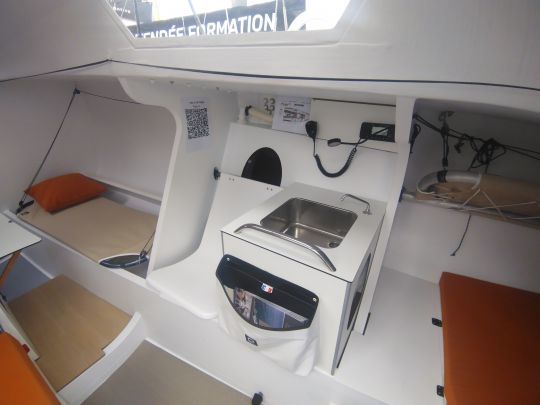
Confirmed racing DNA
Designed to comply with the IRC rules, the Pogo RC has nothing to do with the spirit of the shipyard. It is clearly aimed at a well-informed public: experienced racers, adept at long, fast sailing and mixed races. The RC's presence at the Grand Pavois attracted a great deal of interest from visitors, particularly Mini and Class40 owners looking for a more versatile craft.
With the Pogo RC, the Pogo Structures shipyard has taken an assertive step towards IRC competition, without denying its historic expertise in lightweight, high-performance construction. Under the guise of a civilized prototype, this yacht perfectly reflects the continuity of a philosophy: that of a shipyard where performance remains an engineering tool before being a posture.

 /
/ 